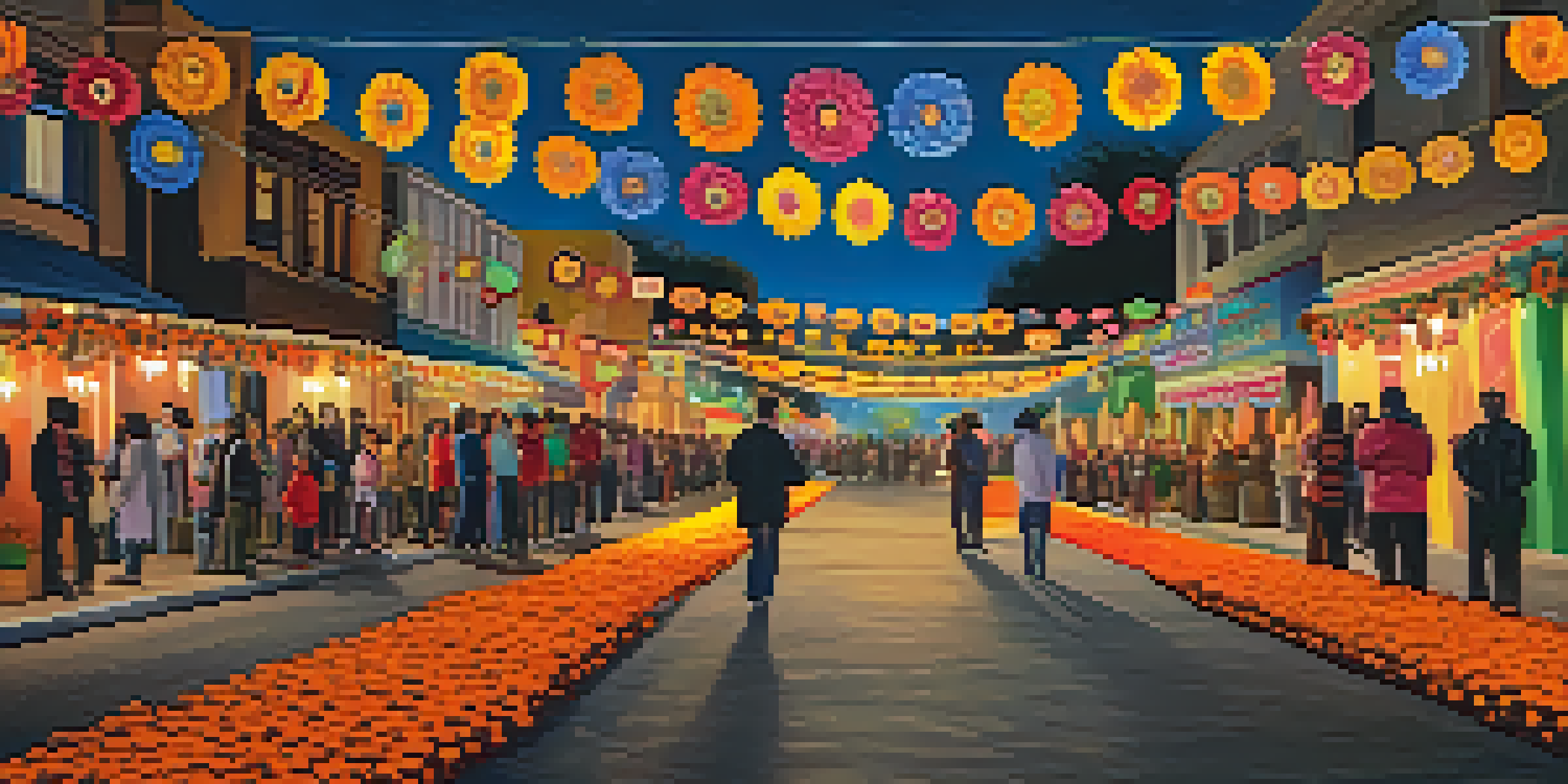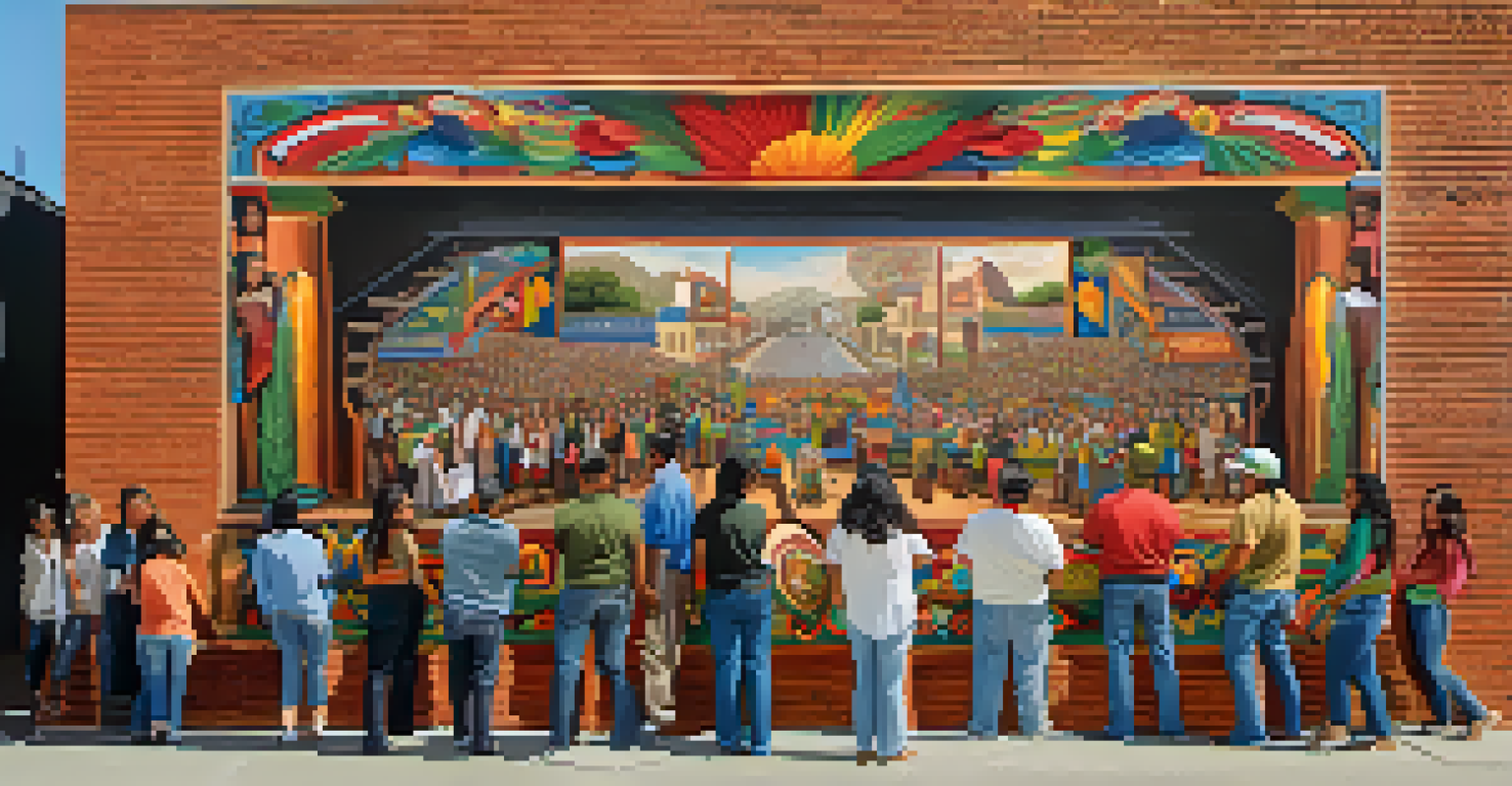The Evolution of San Jose's Mexican-American Community

The Early Foundations of the Mexican-American Community
San Jose's Mexican-American community has roots that trace back to the late 19th century when Mexican laborers came to the area for work. Their contributions were vital in agriculture and railroad construction, shaping the region into what it is today. This early migration set the stage for the cultural blending that would characterize San Jose's identity.
In diversity there is beauty and there is strength.
As these laborers established themselves, they brought with them traditions, language, and customs that enriched the local culture. Neighborhoods began to form, creating a sense of belonging and community among the Mexican-American families. These early foundations laid the groundwork for future generations to celebrate their heritage.
Despite facing challenges and discrimination, the resilience of the community allowed it to flourish. The establishment of local businesses and community organizations became a testament to their determination, showcasing the vibrant spirit of the Mexican-American population.
The Impact of the Great Depression on the Community
The Great Depression in the 1930s brought economic hardship, affecting many communities, including San Jose's Mexican-American residents. Many families faced job losses, and the struggle to survive led to increased tensions and discrimination. This period tested the strength of the community and highlighted the necessity for solidarity.

During these tough times, community organizations played a crucial role in providing support and resources. Mutual aid societies emerged, helping families with food and shelter, and fostering a sense of unity. This collective effort not only assisted those in need but also reinforced cultural ties and community pride.
Roots of Community Resilience
The Mexican-American community in San Jose has historically demonstrated resilience through cultural preservation and solidarity, even in the face of adversity.
Ultimately, the Great Depression sparked a renewed commitment among Mexican-Americans to advocate for their rights and improve their circumstances. This resilience helped pave the way for future activism, as the community recognized the importance of solidarity in facing adversity.
The Post-War Boom and Cultural Renaissance
The end of World War II marked a significant turning point for San Jose's Mexican-American community, as returning veterans sought to rebuild their lives. An economic boom led to increased job opportunities, allowing many families to thrive. This newfound prosperity contributed to a cultural renaissance in the community.
Education is the most powerful weapon which you can use to change the world.
During this time, Mexican-Americans began to openly celebrate their heritage through festivals, art, and music. Events like Fiesta de las Rosas showcased traditional dances and cuisine, drawing in larger audiences and fostering appreciation for Mexican culture. These celebrations not only strengthened community bonds but also educated the wider public about their rich traditions.
In addition to cultural expression, this era saw the rise of prominent leaders advocating for civil rights and social justice. Their efforts paved the way for greater representation and equality, setting the stage for future generations to continue the fight for their rights.
Challenges of Urbanization in the 1960s and 70s
As San Jose grew rapidly in the 1960s and 70s, urbanization brought both opportunities and challenges to the Mexican-American community. While new jobs and services emerged, many families faced displacement due to city development projects. This led to a sense of loss and frustration among residents who had deep roots in their neighborhoods.
In response to these challenges, community activism surged, with many individuals advocating for fair housing and preservation of their cultural landmarks. Grassroots organizations sprang up, rallying support to fight against displacement and ensure that their voices were heard. This period marked a significant shift, as many began to realize the power of collective action.
Cultural Renaissance Post-WWII
After World War II, the community experienced a cultural renaissance, celebrating their heritage through festivals and advocating for civil rights.
Despite the hardships, this era also saw a rise in political engagement among Mexican-Americans. Increased voter registration efforts and participation in local government signified a new level of awareness and empowerment, laying the groundwork for future generations to continue the fight for equity.
The Role of Education in Empowering the Community
Education has always been a cornerstone for the Mexican-American community in San Jose. As families emphasized the importance of schooling, local schools began to adapt, offering bilingual programs and culturally relevant curricula. This focus on education not only empowered individuals but also fostered a sense of pride in their heritage.
Throughout the years, community leaders recognized the need for mentorship and support systems to help young students succeed. Programs aimed at tutoring and college readiness emerged, equipping youth with the skills they needed to pursue higher education. This investment in education has had a lasting impact, as many graduates return to uplift their community.
As the community continues to grow, the emphasis on education remains steadfast. Many now advocate for equitable access to resources and opportunities, ensuring that future generations can thrive and contribute to the rich tapestry of San Jose's multicultural landscape.
Modern-Day Contributions and Cultural Celebrations
Today, the Mexican-American community in San Jose plays an integral role in shaping the city's identity. From local businesses to cultural organizations, their contributions are visible in every facet of life. This vibrant community continues to celebrate its heritage through events like Día de los Muertos and Cinco de Mayo, fostering unity and pride.
These cultural celebrations not only honor traditions but also educate the broader public about the significance of Mexican customs. They create spaces for dialogue and understanding, inviting everyone to join in the festivities. This inclusivity helps bridge cultural gaps and strengthens community bonds.
Education as Empowerment
Education has been a cornerstone for the Mexican-American community, fostering pride and providing opportunities for future generations.
Moreover, the community's influence extends into arts, music, and cuisine, showcasing the richness of Mexican culture. Local artists and musicians are gaining recognition, further solidifying the Mexican-American presence in San Jose. This ongoing cultural exchange enriches the city's diversity and highlights the importance of the community's contributions.
The Future of San Jose's Mexican-American Community
As we look to the future, the Mexican-American community in San Jose is poised to continue its growth and influence. With a younger generation increasingly engaged in social and political issues, their voices are becoming stronger and more impactful. This shift signals a promising future for advocacy and representation.
Community leaders and activists are focusing on issues like immigration reform, healthcare access, and education equity, aiming to ensure a brighter future for all residents. Their dedication to these causes reflects the resilience and determination that have characterized the community throughout its history.

Ultimately, the evolution of San Jose's Mexican-American community is a testament to its strength and adaptability. By embracing their heritage while engaging with contemporary challenges, they continue to inspire future generations, ensuring their story is not just preserved but celebrated.